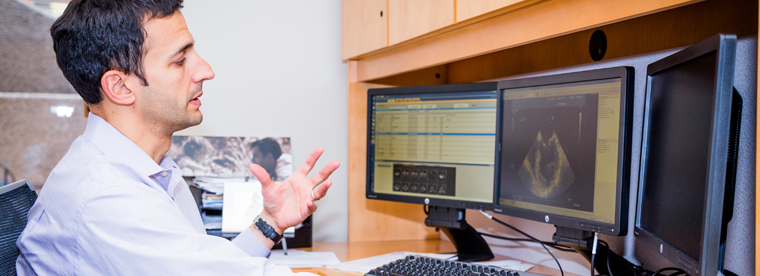An analysis led by MedStar researchers to evaluate two options for Transcatheter aortic valve replacement (TAVR) was recently published in Circulation. The study, “Hemodynamic and Echocardiographic Comparison of the Lotus and CoreValve Transcatheter Aortic Valves in Patients With High and Extreme Surgical Risk: An Analysis From the REPRISE III Randomized Controlled Trial,” compared the valve hemodynamics and the impact on outcomes for patients who were part of the REPRISE III clinical trial after one year.
Federico M. Asch, MD from MedStar Cardiovascular Research Network and the MedStar Health Research Institute was the lead author on the paper which was done in collaboration with researchers from Piedmont Marcus Heart Valve Center, Cedars-Sinai Medical Center, Luke’s Medical Center, DeBakey Heart and Vascular Center, Boston Scientific Corporation, and Northshore University Health System.
The REPRISE III (Repositionable Percutaneous Replacement of Stenotic Aortic Valve through Implantation of Lotus Valve System – Randomized Clinical Evaluation) study is a multicenter, randomized clinical trial evaluating two transcatheter aortic valve replacement devices, the mechanically expanded Lotus and the self-expanding CoreValve. The Lotus Valve System is a mechanically expanded, fully repositionable and retrievable valve. The CoreValve is a self-expanding valve.
The primary effectiveness endpoint for the trial was the composite one-year rate of all-cause mortality, disabling stroke, and moderate or greater paravalvular aortic regurgitation (blood flowing between the structure of the implanted valve and cardiac tissue as a result of a lack of appropriate sealing) based on core laboratory assessment by the Cardiovascular Core Laboratories at the MedStar Health Research Institute.
The study enrolled 912 patients who were considered high or extreme surgical risk. The patients were evaluated at four points in the first-year after the procedure, with plans for annual follow-up over an additional four years.
The study did find that the Lotus had significantly greater freedom from moderate or severe paravalvular leak and smaller valve area and higher gradients than CoreValve. The CoreValve did have a better hemodynamic profile, though the study concluded that both valves were favorable. The study found no statistically significant differences between the two groups in any of the clinical baseline characteristics. The hemodynamic differences between the two valves did not translate into worse clinical outcomes.
Dr. Asch is Director of the Echocardiography Core Lab at MedStar Health Research Institute and Associate Professor of Medicine (Cardiology) at Georgetown University.
Circulation, 2018. DOI: 10.1161/CIRCULATIONAHA.118.034129

